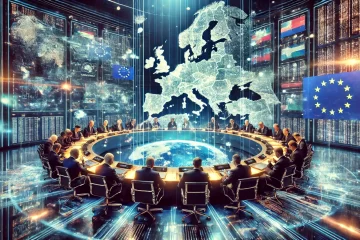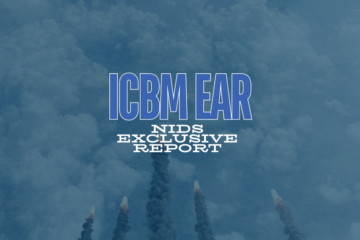After Kianush Jahanpur, Iran’s health ministry spokesman called the Chinese COVID-19 figures a “joke,” there was an exchange of some tweets between him and Chang Hua, Chinese ambassador to Iran. Regardless of the content of the exchanged tweets, and irrespective of which side was right, there was an alarming wave of racist attacks from Iranian Twitter users directed at people of Chinese origin. As soon as this rather harsh twitter diplomacy was over, many users started to tweet with hashtags such as #ChinaLiedPeopleDied, #ChineseVirusCensorship, #WuhanVirus, #ChineseVirus and posting images that portrayed Chinese flag, decorated with yellow virus looking signs, instead of the yellow stars.
Some were using the same flag in the shape of a giant sphere trying to devour a sad-looking Earth. One even superimposed the profile photo of the Chinese ambassador over an illustration of the virus with a “Made in China” tag hanging from the neck of the ambassador-virus. One celebrity shared the #ChineseVirus hashtag after being blocked by the Chinese ambassador and expressed that she had never been happier in her life as a result of being blocked by another user.
All this, as well as numerous attacks on Chinese cuisine and culinary culture, is increasingly more noticeable as a result of widespread global xenophobia directed towards people of Chinese descent and origin due to China being the epicenter of the COVID-19 pandemic. Can a definition of racism be applied to this behavior in Iran (and around the world), although many users are unaware of the implications their behavior carries? What consequences could arise in the long-term?
Is it racism?
“Racism,” writes Hamid Dabashi, professor of Iranian studies at Columbia University, “is not a question of one’s blood type (the Christian criterion used in the sixteenth-century Spain to distinguish Christians from Moors and Jews in Europe) or the color of one’s skin (African and the New World civilizations).” Racism, Dabashi continues, “consists in devaluing the humanity of certain people by dismissing it or playing it down (even when not intentional).”1 Racism—as a classic component of the spread of colonialism by creating the “civilized” and “primitive” binary—would not exist without the desire for hierarchical categorization or classification.
The trick of this classification is simple, as the classifiers place themselves at the top of the classification table (basing the classification system on their culture, including cuisine, hygiene, eating habits, etc.) and those who are classified as ‘outsiders’ or ‘others’ are considered to be less human, and even dangerous. In this respect, the recent phenomenon in Iran could undoubtedly be interpreted as racist, as individuals engage—however unintentionally—in a system of a hierarchical categorization and classification. Labeling an entire group of people with a submicroscopic agent that could have spread anywhere on the planet—as other viruses like H1N1/Swine Flu did—is the mass classification of people of Chinese origin, and is as wrong and unjust as the Chinese Communist Party’s mass detention of Uyghur Muslims in concentration camps.
Origins
Racism in Iran is twofold: internal (towards the racialized minorities such as the Kurds, Azaris, etc.), and external (mainly towards the Arab “others”) in the form of an absurd belief in the supremacy of the Aryan race and their purportedly noble past. As an example, many members of the Iranian diaspora identify as Persian, not Iranian; the term “Persia” evokes a sense of historical magnanimity, while “Iran” is more associated with the ignominy of the present. The roots of Iranian racism and xenophobia can largely be traced to successive invasions of the country by Arab and Mongol forces.
The recent upsurge in racist behavior towards individuals of Chinese origin, however, can best be described as politically-motivated racism. In an “ABC” (Any country But China) duel with the Islamic Republic’s foreign policy establishment, many Iranians, especially the opposition, can’t help drawing attention to anything that could damage the ruling regime, even at the cost of their rhetoric being loaded with xenophobia and racism.
Consequences and Repercussions
The most critical and immediate outcome as a consequence of heightened anti-China sentiment in Iran could be the potential metamorphosis of public animosity towards the West into a blind hatred of the [Far] East. The same self-described lovers of democracy, who rightly condemn the burning of U.S. flags and the chanting of the Takbir during Friday Prayers (“Down with America”) seem to have a hard time condemning the ongoing COVID-19-driven racism against China, probably for fear of being labeled as an Islamic Republic apologist or Sinophile. Reckless xenophobic behavior and rhetoric, however, combined with widespread poverty, populist trends, bigotry, and a pinch of nationalism, can snowball into unimaginably devastating forces with equally catastrophic consequences.
1Dabashi, Hamid, Can Non-Europeans Think?, 2015. Page 23.
About the Author
Ali Arfa
Ali Arfa is pursuing his M.A. in North American Studies at the University of Bonn in Bonn, Germany. He is also a student research assistant at empirica, a research and consulting firm.



